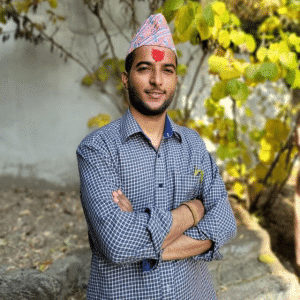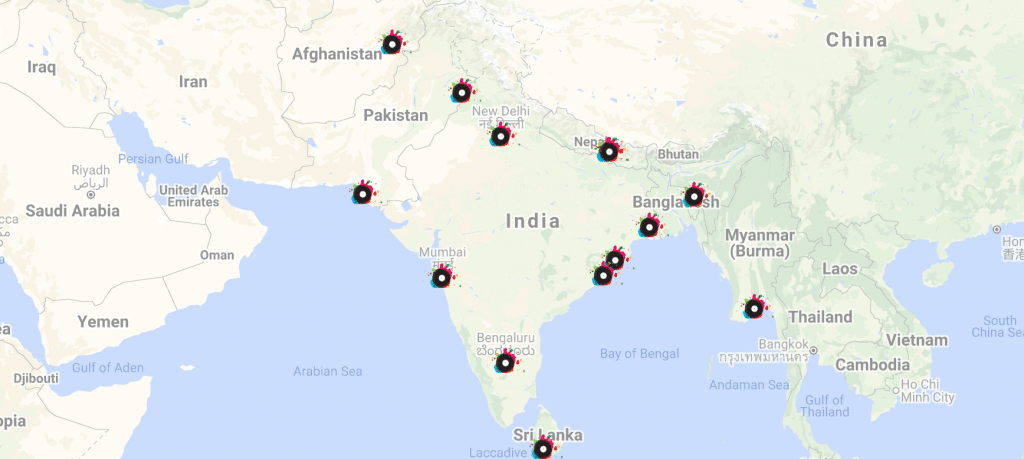MasterPeace in Asia: Opportunities and Challenges

Ashwini Dhakal
Resource Mobilization Team Member
MasterPeace Foundation: Where are we now?
MasterPeace is a nonprofit organization which provides a platform for change-makers across the globe to co-create a conducive environment in which individual talents can prosper. The organization functions at local level, regional level and in an international level through its NGOs, Social enterprises, educational establishments or informal youth groups in more than 40 countries. Those enterprises are licensed to operate as the “MasterPeace Club” in their locality.
Within its 9 (almost 10) years journey, MasterPeace has spanned its networks across the globe by means of soft power of music, art and sports. As its core vision – ‘We believe that the world has 7 billion talents rather than 7 billion issues’ – suggests, the organization is mobilizing youths and talents through campaigns, and concepts where the ultimate goal of such movement is to inspire and connect talents for a sustainable future with less conflict. In addition, narrowing down the existing gap between different communities through coordination and cooperation is a vital issue in today’s competitive world and MasterPeace is one of the vocal organizations to advocate for that goal.
What is ‘Peace’ in ’MasterPeace’?
Likewise, understanding the real meaning of peace is very important. In general, we pose the tendency to perceive peace as a dual form with war, that is, in reciprocity phenomena. In other words, peace is a condition or state where conflict doesn’t exist. However, peace is not merely an absence of war, but it is a process of unification of different mankind via cooperation and coordination in a large scale. This approach of understanding peace aligned with the core value (positivity, impartiality, co-creation and “walk the talk”) of MasterPeace. Similarly, peace is also the emotional phenomena i.e. Tranquility and Integration. Once an individual gets access to explore itself freely with open resources, he/she finds the international peace where such positive vibes can be fostered and utilized to create change within themselves or family or society. Thus, MasterPeace is always promoting SDGs goal (Quality Education, Gender Equality and so on) oriented movements, capacity building campaigns and awareness programs where each individual deserves to be treated equally and impartially in achieving the sustainable future.
Once an individual gets access to explore itself freely with open resources, he/she finds the international peace where such positive vibes can be fostered and utilized to create change within themselves or family or society.
MasterPeace in Asia: Opportunities and Challenges
Even though the MasterPeace is based on Netherlands, it has around 55 Clubs in more than 40+ countries across Asia, Europe, Africa and America. As a largest continent in the world, Asia is a backbone in developing and designing forthcoming programs under MasterPeace organizations. Currently, there are 14 Clubs in Asia from India, Nepal, Pakistan, Bangladesh, Sri Lanka, Afghanistan and Myanmar. Each Club has a range of focus areas and core values in accordance with MasterPeace foundation principles. Nevertheless, there lies an ocean of opportunities and mountains of challenges while advocating for such goals.
With the rise of competitive social practices, populism, extremisms, polarizations and exponential military expenditure and unprecedented climate change, the world is facing social conflicts and interrelated challenges. On such concerning circumstances, the work of MasterPeace has become more relevant than before and here lies the opportunities as well. MasterPeace can be that gap-filler to promote co-operation and co-creation. Likewise, the attempt of persuading mass community into peace building process takes MasterPeace one step closer to achieve its visions and mission.
In this respect, the Corporate Social Responsibility (CSR) action and trend has significantly risen over the past few years means it’s a green light for the Nonprofit organizations. At the same time, costumers are starting to take deep interest in the sustainability policies and observing keenly the way corporations and brands contributing to the common cause in positive ways. Therefore, increased support and collaboration between companies and NGOs assure accountability and social responsibility. The CSR strengthens the bond between businesses and non-profit with a view to open eye for support and co-creation of social projects. Thus, MasterPeace has multitude of opportunities if it can facilitate more and more co-creation amongst the enterprises who aims to take part in providing positive social value.
Last but not the least, MasterPeace is such a unique platform where everyone is able to talk in abstract, non-concrete and imaginative terms (Sudipta, interview). That is, bringing experts, funders and activists into a forum through dialogues that generate new ideas regarding the next working approach for the organizations working for social cause like MasterPeace Clubs. For instance, the gender equality is one of the major SDG goals and one of the social problems in South Asian Countries. Such kind of issue is deeply rooted in the society and it is impossible to root it out overnight. Thus, the continuous dialogue process along with actions amongst all kinds of individuals and organizations ultimately creates positive changes in the individual’s thought process which eventually transforms into society’s thought process. In the long run, we can observe significant changes and positive impacts which again work as a foundation for social changes in a grant scale, quantitatively and qualitatively.
Resource Mobilization and Strategy
It is talked through in the previous chapters of the report concerning why resource mobilization is paramount to the growth of any organization. MasterPeace has designated Resource Mobilizer in Africa and Asia as its part of strategy development and smooth regulation of the available resources and income resources. Before that, it is essential to understand the concept of resource mobilization.
In general, resource mobilization focuses on bringing money, supporters, public and media attention, coordinating with resource partners, and helping to build organizational strategy and structure. It also involves optimum utilization and maximization of the existing resources of an organization. In MasterPeace Foundation, it is believed that the growth of any individual under the organization is automatically the growth of the MasterPeace Clubs and organization as a whole. Basically, it is like ‘you grow, we grow’ mentality. Therefore, constant learning and effort from resource mobilizer adds collective strength in nurturing the organizational strategy.
In MasterPeace Foundation, it is believed that the growth of any individual under the organization is automatically the growth of the MasterPeace Clubs and organization as a whole. Basically, it is like ‘you grow, we grow’ mentality.
MasterPeace Clubs of Asia are open towards inviting available resources, locally and globally, to sustain their Clubs. To do so, they seek for assistance in proposal writing, grant writing, preparation of report, documentation, story writing and so on. This is one of the major jobs for a resource mobilizer. It is important to have knowledge of what is possible and to obtain that, constant communication and dialogues with governments, donors, funders, experts, practitioners, partners, sponsors and collaborative partners is vital. Similarly, as the model of MasterPeace is an ‘upside-down pyramid’ where MasterPeace Clubs are in the lead, it is very much pivotal in constructing mechanism to engage Clubs more in communication with each other.
CONCLUSION - OUR RESOURCE MOBILIZATION STRATEGY IN ASIA
Bring financial resources, human resources, goods and services coordinating with resource partners, and helping to build organizational strategy and structure;
Promote shared vision of priorities and core values with resource partners (private sectors, stakeholders, individual donors, government and district institutions, volunteers);
Raise quality of dialogues by bringing in governments, funders, academics, practitioners, other experts (international and local level) from a particular field; Implements Plan →Act →Reflect Model;
Persuade available resource partners for coordination to connect shared targets;
Expand the range of networks and lures donors and sponsors in align with Club goals where core values (for instance, Quality Education) will be the common element to bind them;
Facilitate communication between core team and Clubs; Puts ideas on the table for Clubs and encourages Clubs to take ownership; and
Assist to Clubs to perform smoothly in their day to day tasks to monthly tasks upon the request for help from the Clubs and their leaders

